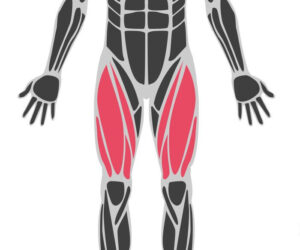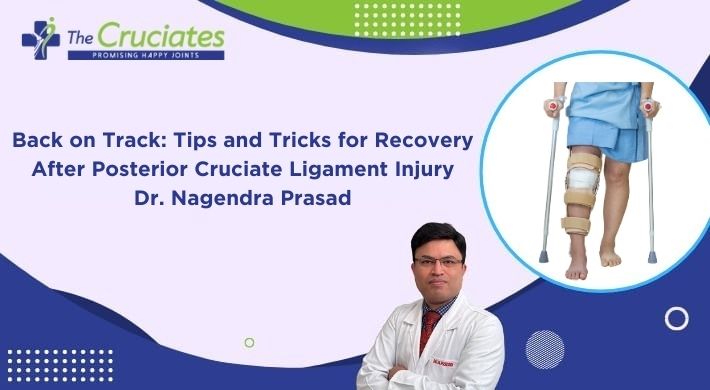Suffering from a Posterior Cruciate Ligament Injury can be challenging, but with the right approach to recovery, you can regain strength and resume an active lifestyle. In this blog, we’ll explore tips and tricks to navigate the recovery process after a posterior cruciate ligament injury, providing valuable insights for a successful rehabilitation journey.

Understanding Posterior Cruciate Ligament Injury:
The PCL is a strong ligament located within the knee joint, connecting the thighbone to the shinbone. PCL injuries often occur due to trauma, such as a direct blow to the front of the knee or a hyperextension injury. Recovering from a Posterior Cruciate Ligament Injury requires patience, dedication, and a well-rounded rehabilitation plan.
Consult with a Healthcare Professional:
The first step in your recovery journey is to consult with a healthcare professional, such as an orthopedic specialist or sports medicine physician. An accurate diagnosis of the severity of your PCL injury will guide the development of a personalized treatment and rehabilitation plan.
R.I.C.E Protocol:
Immediately after sustaining a PCL injury, follow the R.I.C.E protocol: Rest, Ice, Compression, and Elevation. Rest allows the ligament to heal, while ice helps reduce swelling and inflammation. Compression and elevation further aid in minimizing swelling and promoting a speedier recovery.
Bracing and Support:
In some cases, wearing a knee brace may be recommended to provide stability and support to the injured knee. A healthcare professional can advise on the type of brace suitable for your specific PCL injury and guide you on its proper use during various activities.
Early Physical Therapy:
Engage in physical therapy early in the recovery process. A skilled physical therapist can design exercises to strengthen the muscles surrounding the knee, improve range of motion, and enhance stability. Regular physical therapy sessions are crucial for a comprehensive and effective recovery plan.
Focus on Quadriceps Strengthening:

Since the quadriceps play a significant role in stabilizing the knee joint, focus on strengthening exercises for these muscles. Leg extensions, squats, and lunges, under the guidance of a physical therapist, can contribute to improved knee function and stability.
Low-Impact Cardiovascular Exercise:
Maintain cardiovascular fitness with low-impact exercises such as swimming, stationary cycling, or elliptical training. These activities promote overall health without placing excessive strain on the healing PCL.
Gradual Return to Activity:
As your PCL heals, gradually reintroduce activities that involve more dynamic movements. Consult with your healthcare provider or physical therapist to create a phased return-to-activity plan, ensuring you progress at a pace that allows your knee to adapt and strengthen.
Balance and Proprioception Training:
Include exercises that focus on balance and proprioception in your rehabilitation routine. These exercises improve joint awareness and stability, reducing the risk of future injuries. Proprioceptive exercises may include single-leg stands, balance board activities, and stability ball exercises.
Cross-Training:
Incorporate cross-training into your fitness routine to minimize the impact on your injured knee while maintaining overall fitness. Activities like swimming, cycling, and strength training can help you stay active without compromising your PCL recovery.
Patience and Consistency:
Recovery from a PCL injury takes time, and patience is key. Consistently follow your rehabilitation plan, attend scheduled physical therapy sessions, and communicate openly with your healthcare team about your progress and any challenges you may be facing.
Nutrition and Hydration:
Support your recovery with a well-balanced diet rich in nutrients that promote tissue healing and overall health. Stay hydrated to aid in the body’s natural healing processes.
Monitor for Signs of Overexertion or Setbacks:
Pay attention to your body and be vigilant for any signs of overexertion or setbacks. If you experience increased pain, swelling, or discomfort, consult with your healthcare provider promptly to address potential issues and adjust your recovery plan accordingly.
Conclusion:
Recovering from a posterior cruciate ligament injury requires a comprehensive and individualized approach. By following these tips and tricks, you can navigate the rehabilitation process with greater ease and increase the likelihood of a successful recovery. Remember, consistency, patience, and collaboration with healthcare professionals are essential elements of a well-rounded PCL recovery journey. With dedication and the right guidance, you can overcome the challenges of a PCL injury and get back on track to an active and healthy lifestyle.
“The Cruciates” is a team of highly experienced and skilled surgeons who are in the sports medicine field from a long time and have dealt with complicated sports injuries. Dr. Nagendra Prasad is one of the best arthroscopic knee surgeons in Gurgaon leads the team. The Cruciates is committed to deliver high-quality services and would like to make sure that, you are satisfied with our work. The team Cruciates provides customized treatment and follow up to each patient to make sure that everyone will achieve desired level of recovery and rehabilitation to ensure early return to sports.
For more information, please visit www.thecruciates.com. Your path to sports injury recovery and excellence begins here.

